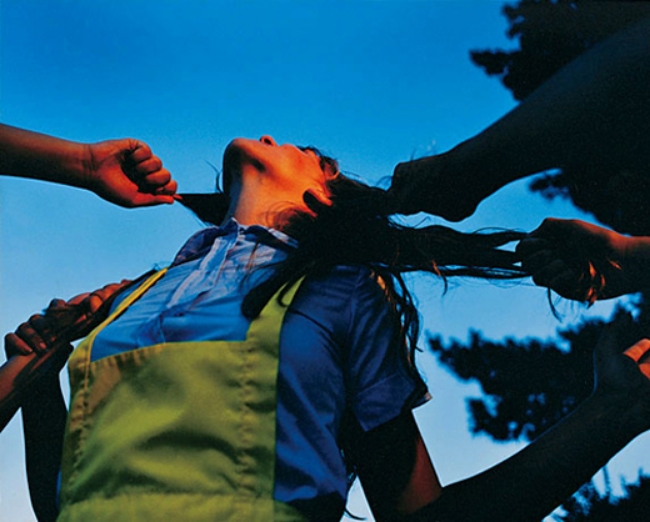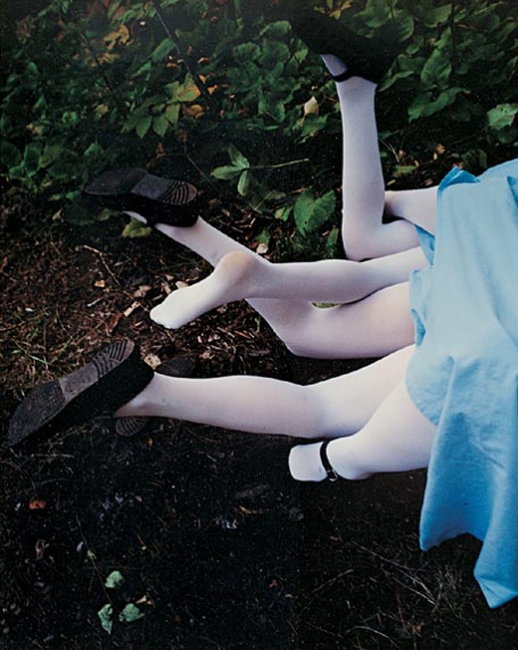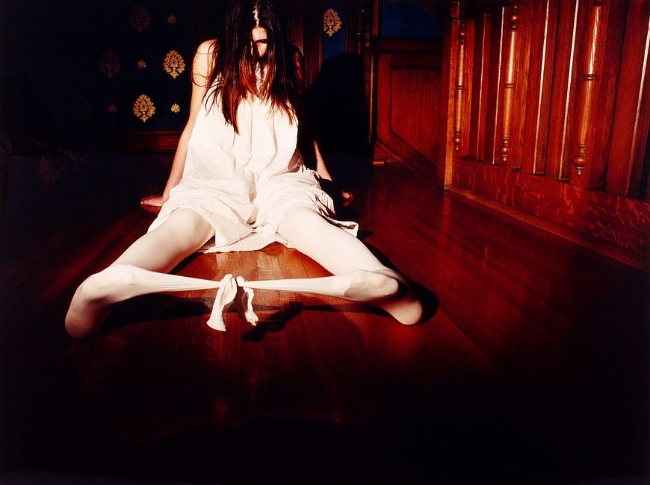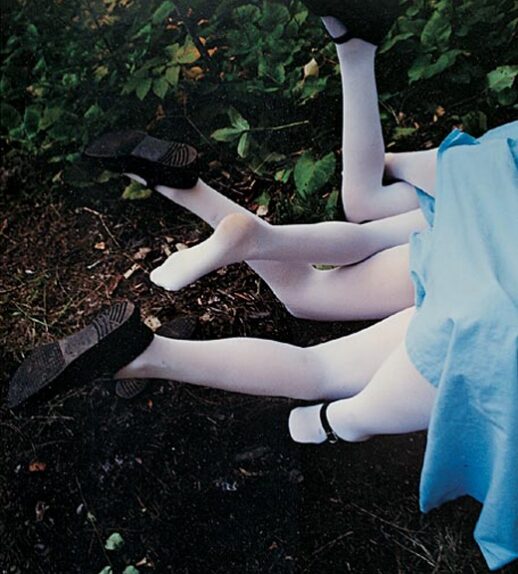Imagine Alice’s Adventures in Wonderland filmed through the lens of Alfred Hitchcock. Imagine the story of Cinderella as interpreted by Edgar Allan Poe. If you can imagine that, then perhaps you’ll have some insight into Anna Gaskell’s photography.
Gaskell’s work is a rather personal exploration of the narratives surrounding the literary adventures adolescent girls. These narratives tend to feature plucky, good-hearted, intelligent girls whose courage and innate goodness allow them to overcome all the dangers and injustices they encounter. But the thing we tend to overlook about adventures is that the people having them don’t know how they’re going to turn out. They don’t know there will be a happy ending. What they know is that they’re caught in situations fraught with anxiety and fear. What they know is that the world looks like a very grim place. When the person having the adventure is an adolescent girl, that anxiety and fear seems much more acute.

Gaskell creates intensely psychological photographic tableaux. She’s not interested in the beginnings of the stories; it doesn’t matter how the character got here. She’s not interested in the endings of the stories; it doesn’t matter how the story might end. Gaskell is interested in probing those in-between parts of the narratives, those interstitial moments when the characters begin to understand that things might not work out well. That, after all, is a more universal experience. Not all adolescents are plucky, they’re not all good-hearted, they’re not all intelligent. Not all dangers can be overcome, not all injustices will be set right. The endings of real stories aren’t always happy.
Gaskell doesn’t treat her subjects as individuals. Rather, they are generic characters. They represent the anxieties of all adolescents–or at least in the eyes of Anna Gaskell they represent the anxieties of all adolescent girls. Very often the subjects are dressed alike. That not only emphasizes the generic quality of the subjects, it also serves to remind the viewer that in real life you can’t always tell the good folks from the bad folks. In real life, sometimes the good folks and the bad folks are the same people.

Gaskell embraces that ambiguity and almost revels in the indefinite nature of the vague threat. She shows us a pile of virginal, white-stockinged legs entangled almost playfully on a woodland path. At first glance it’s all so innocent–those spotless white legs unsullied by the soil beneath them. But one shoe is missing. Why? And one girl is standing over the others, trapping them between her legs. Why?
There is nothing overtly sinister here. No obvious threat, no distinct danger. But there is something here that makes the viewer uneasy. There is some underlying dynamic taking place, and the fact that we don’t understand it generates a free-floating sense of anxiety.
Obviously, these images are staged. Gaskell is recreating a scene she sees in her mind. They aren’t reality; they’re a representation of reality. Because the scenes in the photographs lack context–because the viewer isn’t privy to the beginning or the ending of the scene–they convey an enigmatic urgency. They spark a powerful need for more information while denying the viewer all access to more information.
It might be worth mentioning that Gaskell’s mother died in a car wreck when she was twelve years old–the approximate generic age of most of the subjects in her photographs. It might be worth mentioning that her father died a few years later. I say it might be worth mentioning, because while that knowledge adds another layer of meaning to the images, it’s not necessary to understand or appreciate them. That information may be entirely irrelevant to the work.

For a lot of people, adolescence was a personal nightmare. Adolescents can be extraordinarily cruel to each other. You don’t need to have lost a parent to feel isolated as an adolescent. You don’t need a wicked witch or a cruel stepmother to frighten you. Going to school can be traumatic enough. Entering the locker room for gym class can be as frightening as entering a haunted wood. Having to stand in front of a class and give a presentation can be as harrowing as taking the stairs down to the dark cellar where you’ve heard a strange noise.
Satchell Paige famously said, “Don’t look back; something might be gaining on you.” In Anna Gaskell’s world, you always have to look back over your shoulder. In Anna Gaskell’s world, something is always gaining on you.

